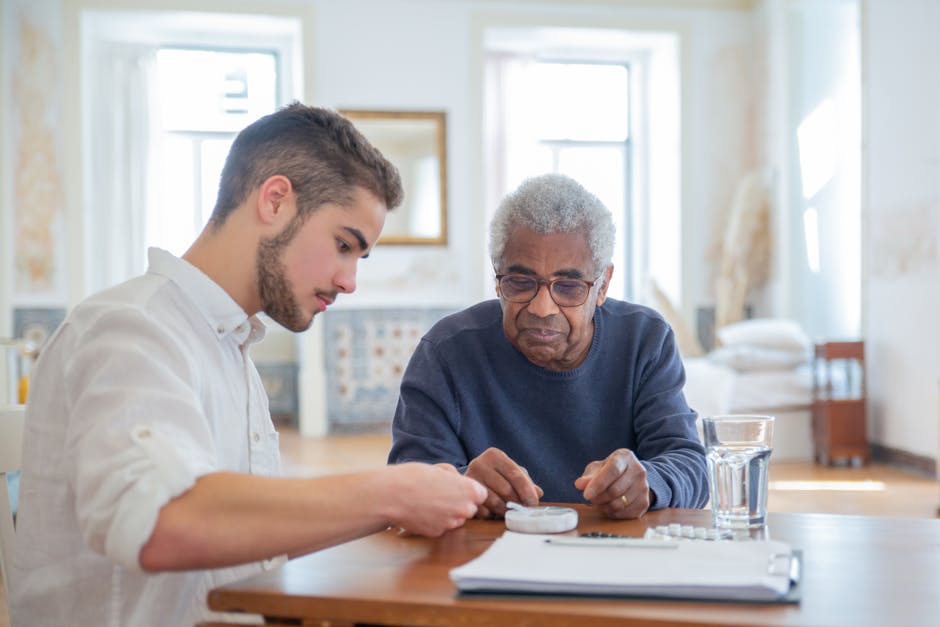As we grow older, many of us find ourselves managing more than just a couple of pills each day. A vitamin here, a prescription there… Before long, you might be juggling a small pharmacy at home.
Learning how to organize your medications is not just about convenience; it’s also about safety. Missing a dose or taking the wrong medication can have serious consequences, but with a little planning, you can make your daily routine much easier and much safer.
This guide will walk you through simple, practical ways to organize your medications so you can feel confident and in control every day.
Why Medication Organization Matters
For seniors, medication errors are one of the most common reasons for emergency room visits. These mistakes can happen for many reasons: forgetting if you’ve taken a pill, accidentally doubling up on a dose, or confusing similar-looking bottles.
When you organize your medications well, you:
- Prevent missed or doubled doses
- Make it easier for caregivers or family to help
- Save time and reduce daily stress
- Protect your health by ensuring proper dosage and timing
Think of medication organization as another way to care for yourself — like eating well or exercising.
Step 1: Gather All Your Medications in One Place
Start by collecting everything you take regularly — prescription medications, over-the-counter pills, vitamins, supplements, and even occasional-use items like allergy tablets. Having them all in one spot will help you see the big picture.
While gathering, check for:
- Duplicates (you might have the same medication in two bottles)
- Expired medications (these should be safely discarded — your pharmacy can help with this)
- Old prescriptions you no longer take (also dispose of these safely)
By clearing out what you don’t need, you reduce confusion and free up space.
Step 2: Choose the Right Storage Spot
Where you keep your medications matters. The best location is:
- Cool, dry, and away from sunlight (medicine cabinets in bathrooms can be too humid)
- Easily accessible (especially if you have mobility issues)
- Out of reach of grandchildren or pets
Many people use a kitchen cabinet or a designated drawer. If you travel often, consider a small lockable box so you can take your medications with you securely.
Step 3: Use a Pill Organizer
A pill organizer can be a game-changer. These handy containers are divided into compartments for days of the week and sometimes times of the day (morning, noon, evening, bedtime).
Tips for using a pill organizer:
- Choose one that suits your needs — daily, weekly, or even monthly organizers are available
- Fill it at the same time each week (some people like Sunday evening as a routine)
- Double-check each compartment after filling to ensure accuracy
If your medications change frequently, keep the original bottles close by so you can adjust as needed.
Recommended pill organizer: EZY DOSE Push Button (7-Day) Pill Case
Step 4: Create a Medication List
Having a clear list of your medications is helpful for you, your family, and your healthcare providers. Include:
- Name of each medication
- Dosage
- Time(s) of day taken
- Purpose (why you take it)
- Prescribing doctor’s name
Keep one copy in your home (near your medications) and another in your wallet or purse. In case of an emergency, this list can be a lifesaver.
Step 5: Set Reminders
Even with everything neatly organized, it’s still easy to forget a dose — especially if your schedule changes. Consider:
- Phone alarms or smart speaker reminders
- Medication reminder apps (many are simple to use, even for beginners)
- Sticky notes in visible spots like the fridge or bathroom mirror
If you prefer a low-tech approach, a printed daily checklist works just as well.
Step 6: Involve a Family Member or Caregiver
If you have a trusted friend, family member, or caregiver, let them know your medication routine. They can:
- Help refill your pill organizer
- Remind you of refills before you run out
- Watch for any changes in your prescriptions
Having another set of eyes can help catch mistakes and give you peace of mind.
Step 7: Review Your Medications Regularly
At least twice a year — or whenever you get a new prescription — review your medication list with your doctor or pharmacist. They can:
- Check for possible drug interactions
- Adjust doses if needed
- Suggest alternatives that might be easier to manage
This is especially important if you take medications from more than one doctor.
Small Habits Make a Big Difference
Medication organization isn’t something you do once and forget about — it’s a habit that becomes part of your routine. The more consistent you are, the easier it becomes.
Here’s a simple weekly routine:
- Fill your pill organizer at the same time each week
- Check your medication supply for anything running low
- Keep your list up to date
- Make adjustments as prescribed by your doctor
A Final Word

Staying on top of your medications doesn’t have to feel overwhelming. With the right tools, a little planning, and maybe a helping hand from loved ones, you can create a system that works beautifully for your life.
When you organize your medications in a way that fits your lifestyle, you not only protect your health but also bring peace of mind. That means less time worrying about pills and more time enjoying the things you love.
FAQ
What is the easiest way to organize my medications at home?
The easiest method is to use a weekly or monthly pill organizer, set consistent refill times, and organize your medications in one safe, accessible location. Pairing this with a written medication list can make the process simple and stress-free.
How often should I review my medication list with my doctor?
You should review your medication list at least twice a year or whenever there’s a change in your prescriptions. This helps ensure there are no dangerous drug interactions and that your dosages are still appropriate.
Are medication reminder apps easy for seniors to use?
Yes, many medication reminder apps are designed to be senior-friendly with large text, clear alerts, and simple navigation. If you prefer not to use an app, phone alarms or sticky notes can be equally effective.



